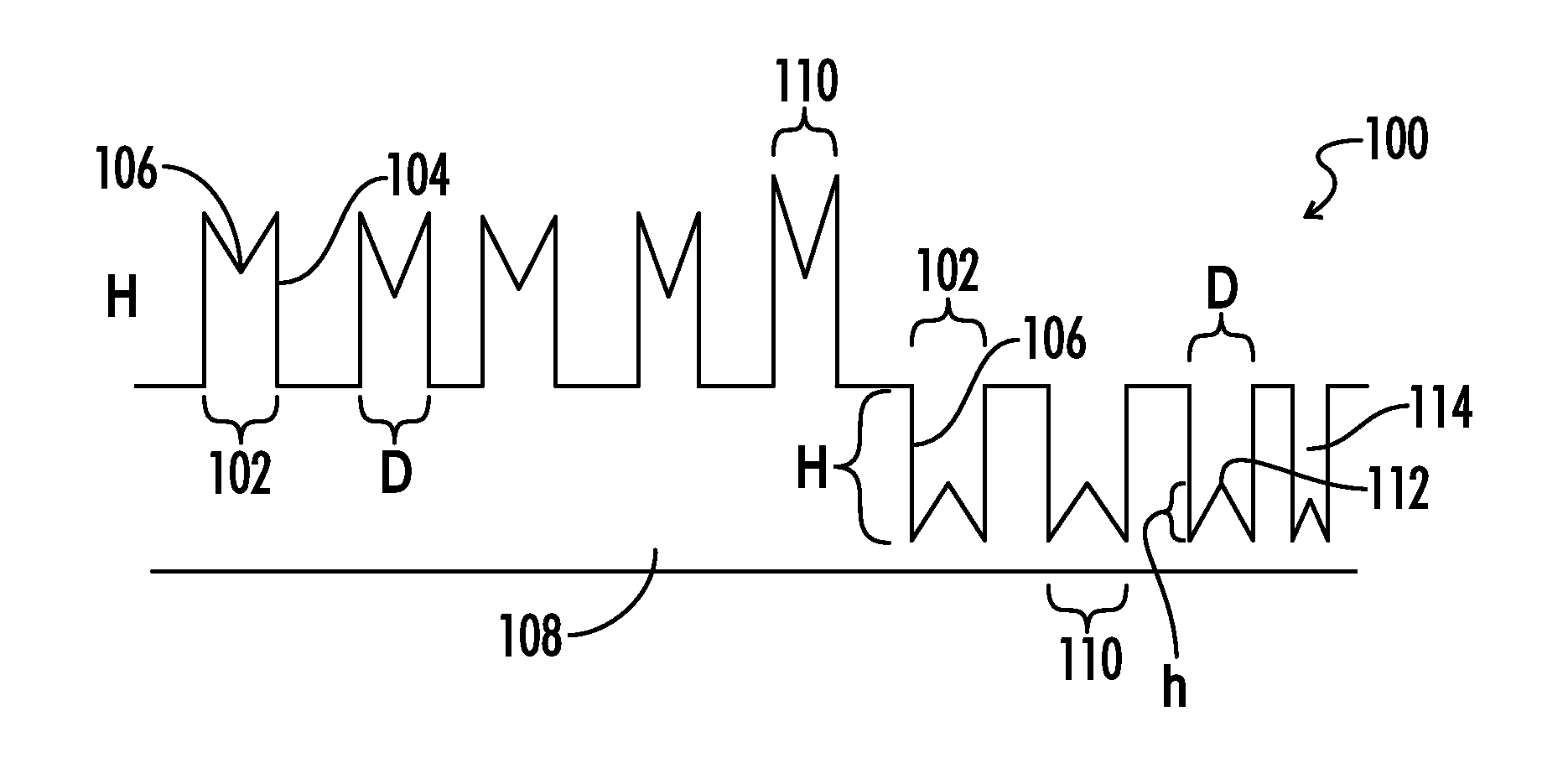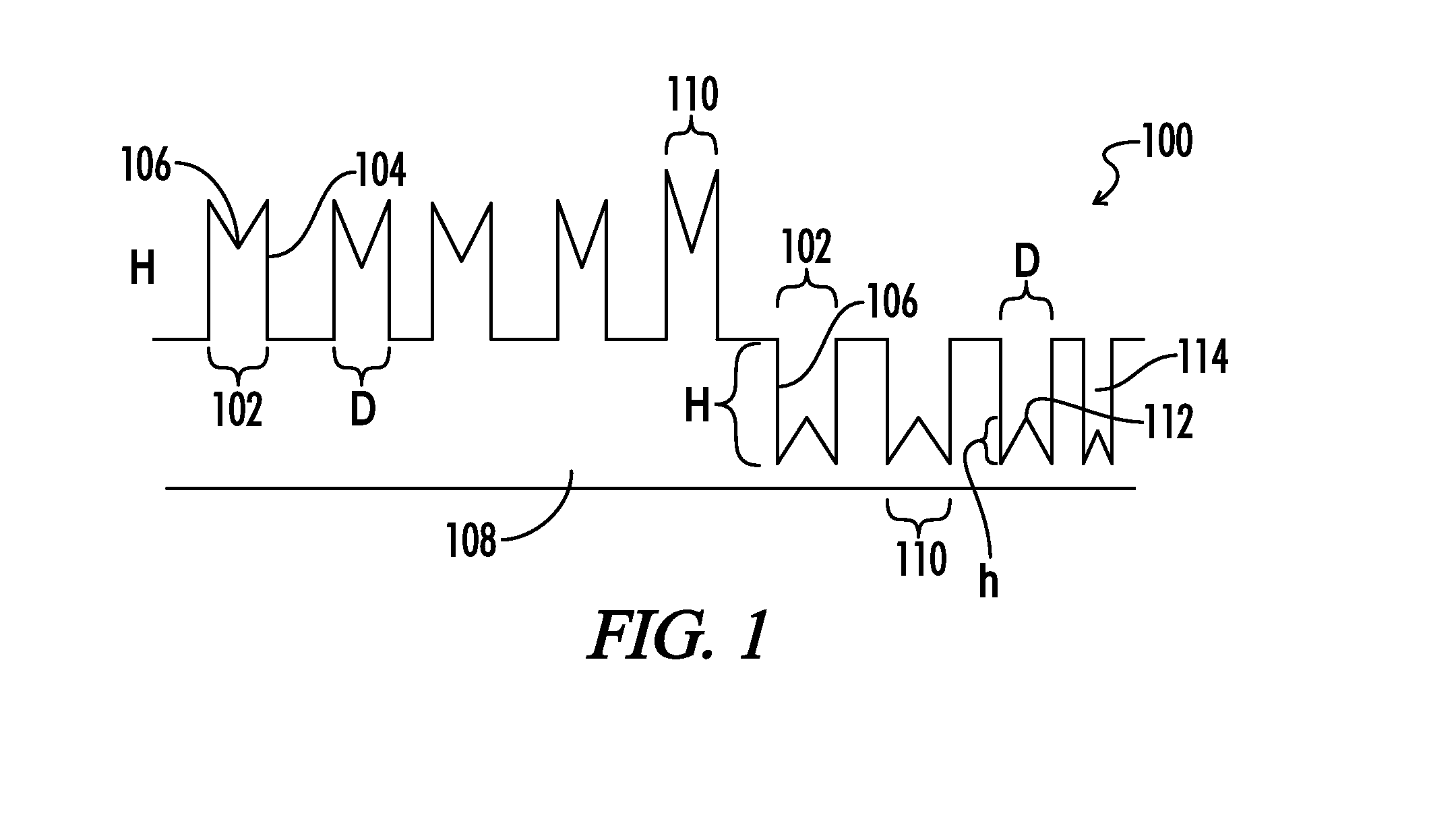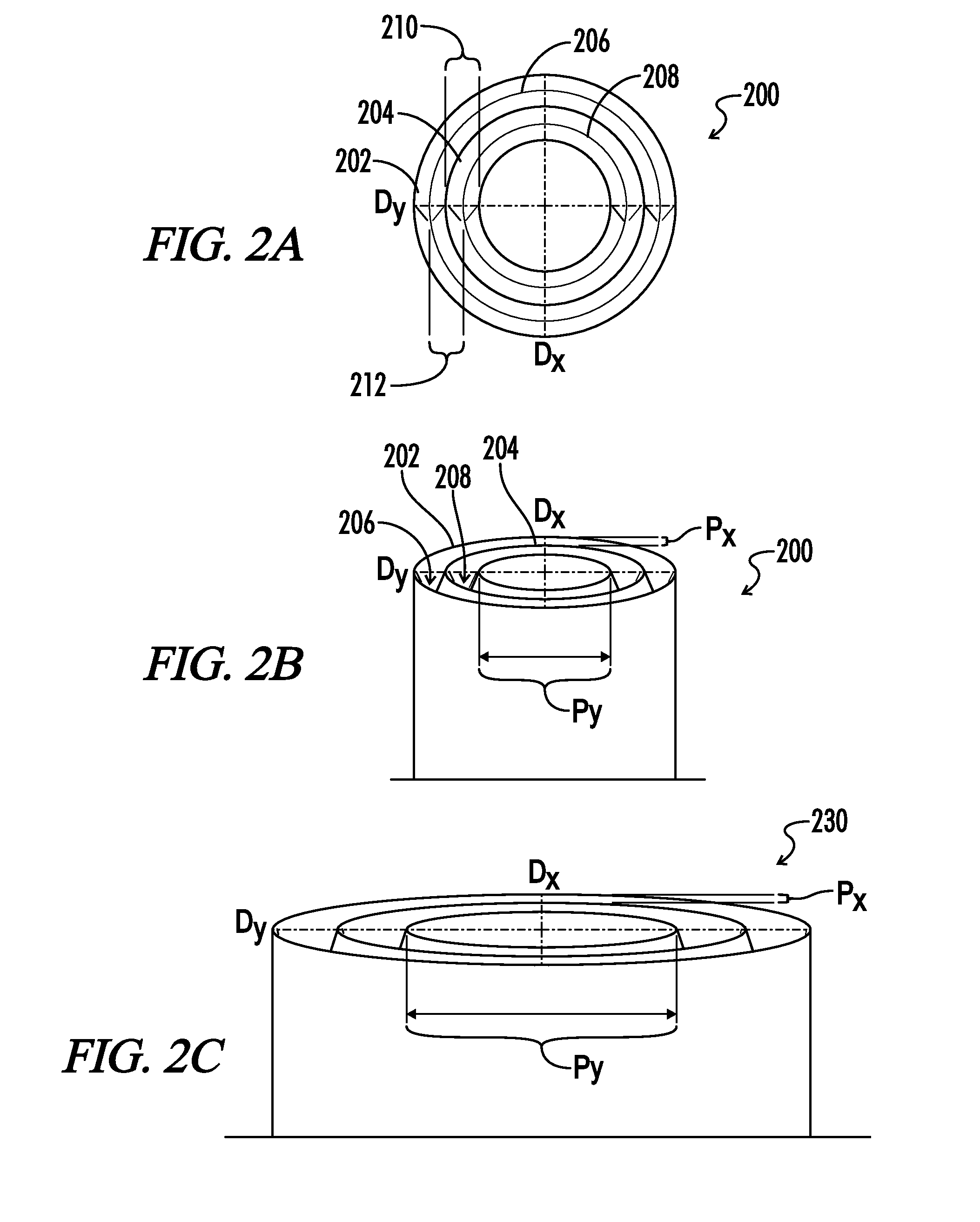Implantable superhydrophobic surfaces
a superhydrophobic, implantable technology, applied in the direction of prosthesis, surgery, coatings, etc., can solve the problems of reducing the mobility of the implant in situ, requiring sutures or other physical means of localization, etc., to achieve the effect of resisting the sliding, rolling, folding or other conformal changes of the implantable medical devi
- Summary
- Abstract
- Description
- Claims
- Application Information
AI Technical Summary
Benefits of technology
Problems solved by technology
Method used
Image
Examples
example 1
[0165]A planar implant comprising a tissue adhesive surface on one side and a tissue anti-adhesive surface on the other side. The implant may possess holes that pass through the planar implant allowing for tissue to grow through the implant. In this aspect, the present example is novel in functionality in that the tissue through-growth does not promote tissue adhesion to adjacent tissue surfaces since it is well vascularized tissue which is distinct from scar tissue which is not well-vascularized and tissue adhesive.
[0166]Accordingly, the above implant may possess a petal effect on the tissue adhesive side and a lotus effect on the tissue anti-adhesive side. The anti-adhesive side would be super hydrophobic, possessing a surface texture with spatially hierarchical roughness, wherein the contact angle at every scale of surface roughness is substantially of Cassie type. The tissue adhesive side would be super hydrophobic, possessing a surface texture with spatially hierarchical roughn...
example 2
[0168]A surgical barrier comprised of a nonporous layer which on one side possesses a high contact hysteresis angle and on the other side possesses a low contact hysteresis angle wherein first high contact hysteresis angle is sufficiently large to generate a rapid and reversible adhesion to tissue. The rapidity of adhesivity being largely determined by the energy required to form a solid / liquid interface and the ease of reversibility being largely determined by the energy required to dis-associate a solid / liquid interface.
example 3
[0169]A tissue scaffold for soft tissue repair, wherein all surfaces are adhesive. The implant may be substantially porous to allow tissue incorporation and to direct neovascularization of the implant. The implant may be bioabsorbable. Said surfaces characteristically possess a high contact angle hysteresis. The contact angle hysteresis may be small on exterior surfaces as compared to internal porous surfaces to promote tissue incorporation without promoting excessive adjacent tissue adhesions. Alternatively, the external surface may possess a contact angle hysteresis that is greater than the internal contact angle hysteresis. Such an implant might be used in a context where greater adhesivity between adjacent tissue layers is desirable in a soft tissue repair.
PUM
| Property | Measurement | Unit |
|---|---|---|
| contact hysteresis angle | aaaaa | aaaaa |
| contact angle | aaaaa | aaaaa |
| contact hysteresis angle | aaaaa | aaaaa |
Abstract
Description
Claims
Application Information
 Login to View More
Login to View More - R&D
- Intellectual Property
- Life Sciences
- Materials
- Tech Scout
- Unparalleled Data Quality
- Higher Quality Content
- 60% Fewer Hallucinations
Browse by: Latest US Patents, China's latest patents, Technical Efficacy Thesaurus, Application Domain, Technology Topic, Popular Technical Reports.
© 2025 PatSnap. All rights reserved.Legal|Privacy policy|Modern Slavery Act Transparency Statement|Sitemap|About US| Contact US: help@patsnap.com



